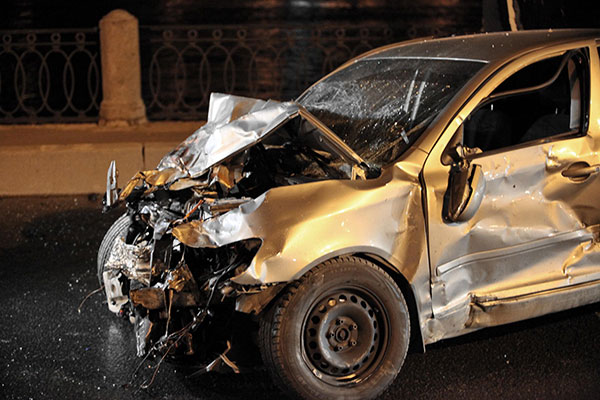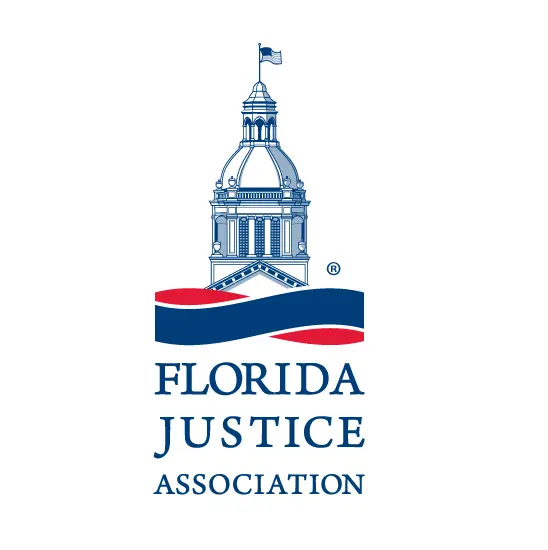“I’ve been seriously injured in a head-on car accident in Tampa. What’s the next step?”
Not to mention the pain and suffering often associated with a head-on collision. Head-on collisions are one of the most frightening types of car accidents a person can experience in their lifetime. If you survive, recovering physical and emotionally from such a devastating accident may take months or even years… if you ever do.
On top of all that, there’s the financial damages to consider which add further stress to afflicted individuals and families.

In situations where an individual is injured in a head-on crash caused by another person, a personal injury lawsuit may be filed to help the victim and their family receive just compensation for medical expenses, property damage, pain and suffering, wrongful death and other damages.
Recovering from a serious accident is hard.
Let our Tampa car accident attorneys make it a little easier with expert legal representation for your head-on collision case.
Schedule your free case evaluation today.
What is a Head-On Collision?
A head-on collision, also referred to as a “frontal crash” or “front impact accident,” is when two vehicles traveling in opposite directions hit into each other’s front ends. Unlike T-bone collision or rear-end accidents, head-on crashes can be clearly identified by damage of varying degrees to both vehicle’s front-ends depending on the rate of speed both automobiles were traveling during the time of impact.
Sideswipe collisions occur when two vehicles traveling in opposite directions touch and scrape each vehicle’s side. They differ slightly from head-on collisions in that most of the damage is focused on the sides of the vehicles rather than the front. Sideswipe accidents are typically less severe than direct head-on crashes.
Common Head-On Collision Injuries
Even if the driver and passengers were wearing their seatbelts, injuries resulting from a head-on collision are often catastrophic and severe. Common head-on collision injuries include:
- Head/brain damage (TBI)
- Neck/back damage
- Amputation/disfigurement
- Concussions
- Whiplash
- Broken bones
- Lacerations
- Internal bleeding
- Organ damage
- Abdominal bruising
- Chest and ribcage damage (caused by the airbag or seatbelt)
- Crushed legs and feet
The worst injury of all – wrongful death – is also unfortunately common in the case of head-on collisions.
The danger of fatality increases greatly for motorists who weren’t wearing a seatbelt when involved in a head-on collision. Unsecured drivers and passengers can sustain additional injuries if they are ejected from the vehicle upon impact.
Common Causes of Head-On Accidents
Head-on accidents can occur almost anywhere, but are especially common on rural roads with narrow lanes, poor lighting and no guardrails or traffic dividers. Whether a frontal crash occurs in a neighborhood, city highway or rural road, there are plenty of causes that can lead to such a dangerous and deadly accident, such as:
- Drunk driving
- Defective or dangerous roads
- Distracted driving (i.e. texting and driving)
- Poor weather conditions (rain, fog, etc.)
- Drowsy driving
- Unsafe passing
- Driving the wrong way down a road
- Hazardous construction zones
- Senior drivers
Regardless of the specific cause of a head-on collision, a trait they almost always share is negligence – on the part of another driver, company, government agency or other third-party. When a negligent act plays a role in a car accident, injured victims or surviving family members have a legal right to seek compensation for their losses by filing a personal injury claim.
“I’m very grateful for the work he did on my case. He worked hard to get the most out of my case. He fights for people’s rights and I would hire him again if I ever needed a lawyer.”
Head On Collision Facts & Statistics
Head-on collisions are not only a serious problem in the state of Florida, but nationwide. By knowing the real dangers posed by this deadly type of crash, we hope to help keep you cautious, conscientious and safe behind the wheel. Here are some sobering statistics about head on crashes:
- Head-on accidents have a higher fatality rate than other types of car crashes. Combined, head-on, rollover, pedestrian and bicycle crashes account for only 6.1% of all car accidents but result in over one-third (34.5%) of traffic-related fatalities.
- There are approximately 123,000 head-on collisions – only 2.0% of all US crashes – but they account for 10.1% of US fatal crashes.
- Head-on accidents have a higher fatality rate than other types of car crashes. Combined, head-on, rollover, pedestrian and bicycle crashes account for only 6.1% of all car accidents but result in over one-third (34.5%) of traffic-related fatalities.
- There are approximately 123,000 head-on collisions – only 2.0% of all US crashes – but they account for 10.1% of US fatal crashes.
Determining Liability in a Head-On Crash
Each driver has a legal obligation (or “duty of care”) to look out for the safety of other drivers, pedestrians and other individuals. When a driver fails to obey this legal obligation, negligence has taken place and the at fault party may be held liable for damages and injuries caused to another as a result of their negligent actions.
As with most car accident cases, negligence in some way almost always plays a role when a head-on collision occurs.
The difficult part is providing enough evidence that the driver’s negligence directly contributed to the collision that seriously injured you or killed a loved one. This concept is known as your “burden of proof.”
A knowledgeable car accident attorney can prove negligence in your head-on collision case by gathering enough evidence to cast a reasonable level of fault on the other driver, making them legally responsible for your financial injuries and damages. If liability is unclear, as some cases are, your attorney can help mitigate the settlement depending on your degree of fault to ensure the best possible outcome.
Damages in a Head On Car Accident Case
Once fault has been established, a plaintiff must provide a list of damages the other driver is responsible for. Head-on collision damages can include property damage and injuries (both physical and emotional) such as compensation for medical bills, medication, missed time at work, pain and suffering, lost earning capacity and other financial losses. An experienced attorney comes in handy by helping to calculate the full extent of short-term and long-term damages, ensuring that you and your family are appropriately compensated.
What To Do After a Severe Head-On Collision
In the moments following a head-on car accident where someone is seriously injured or killed, those involved can feel paralyzed with fear, apprehension and shock. It is important for accident victims or their friends/family members to gather as much evidence and information as possible at the accident scene. Acquiring a copy of the police report, gathering witness contact information, and taking pictures is a good start.
Once victims have received appropriate medical care, it’s time to begin the process of financial recovery from the staggering costs often associated with these types of accidents. Consulting an experience personal injury attorney is the best place to start. A skilled car accident lawyer will be able to expertly prove fault, negotiate with insurance companies, file a claim, and argue for your rights in court if it comes to that.
If you were seriously injured in a head-on collision, or lost a loved one due to a negligent driver, contact Tampa’s top-rated personal injury law firm – Lorenzo & Lorenzo. Our car accident attorneys specialize in all types of crash cases, including head-on collisions. We have successfully represented individuals and families all over Tampa, St. Pete and Clearwater, Florida. Schedule your free consultation today to learn how we can help you recover.






